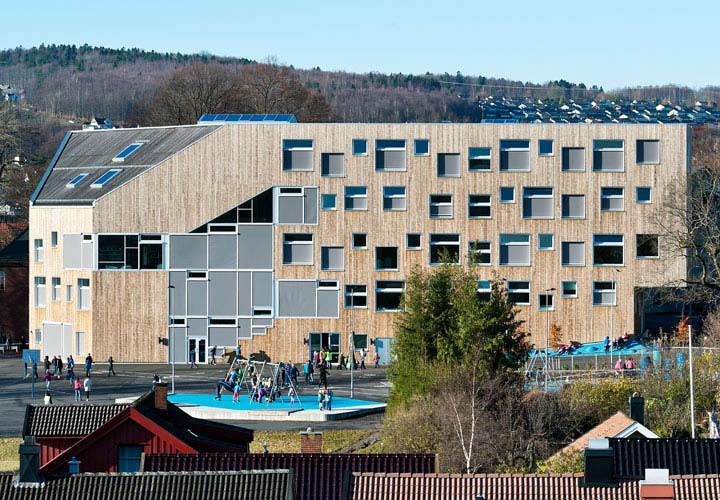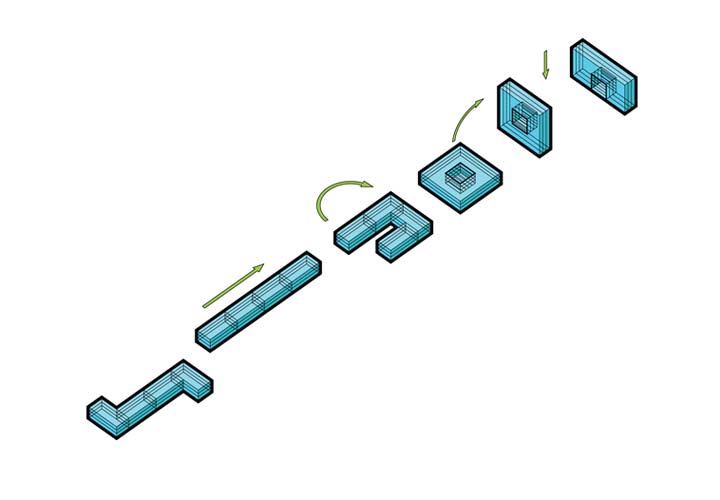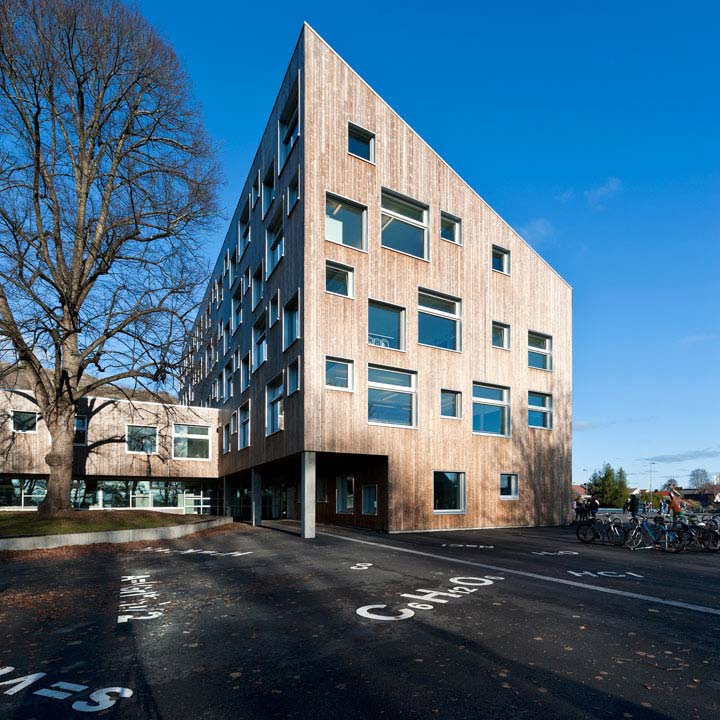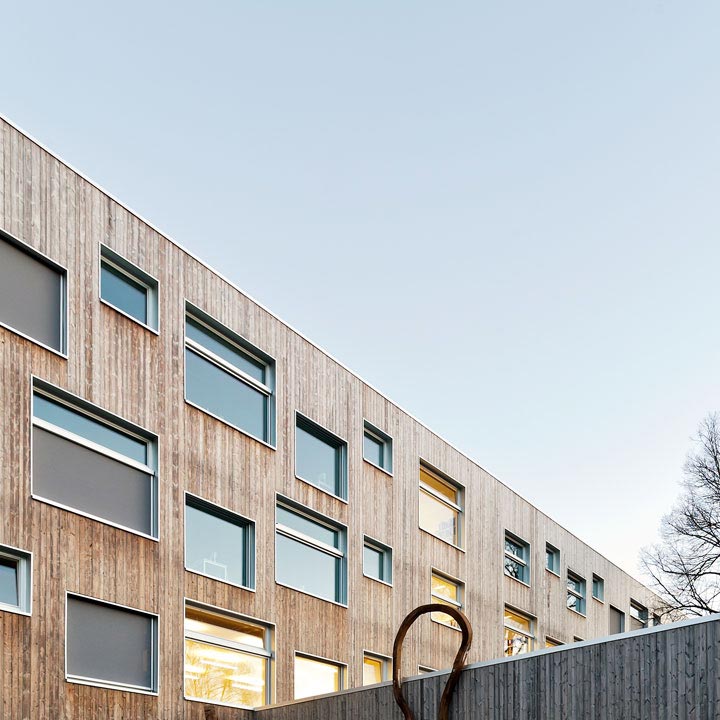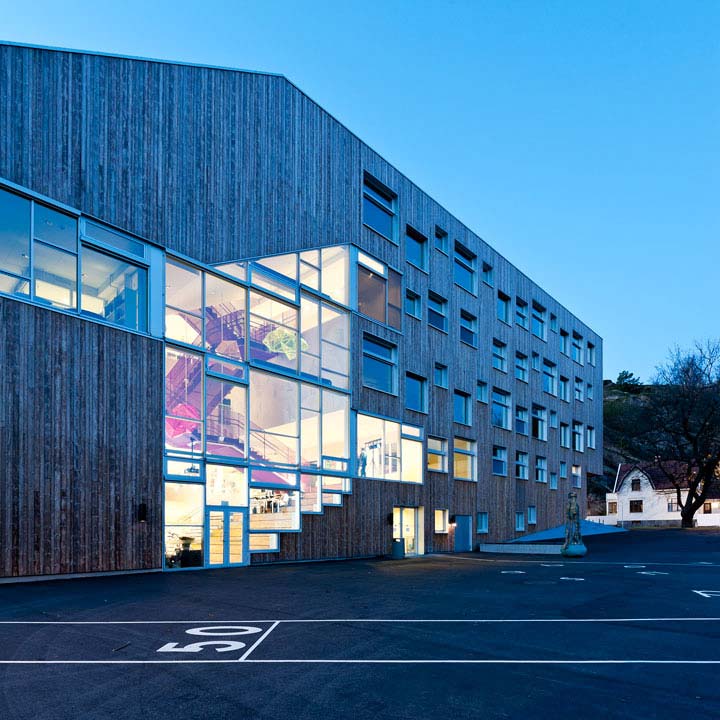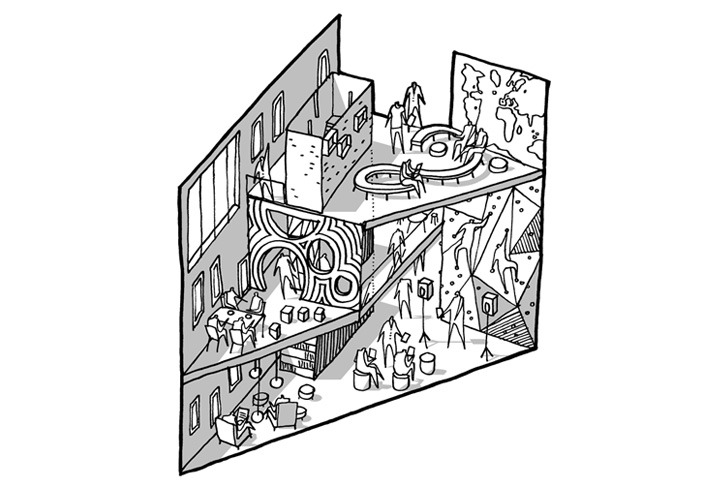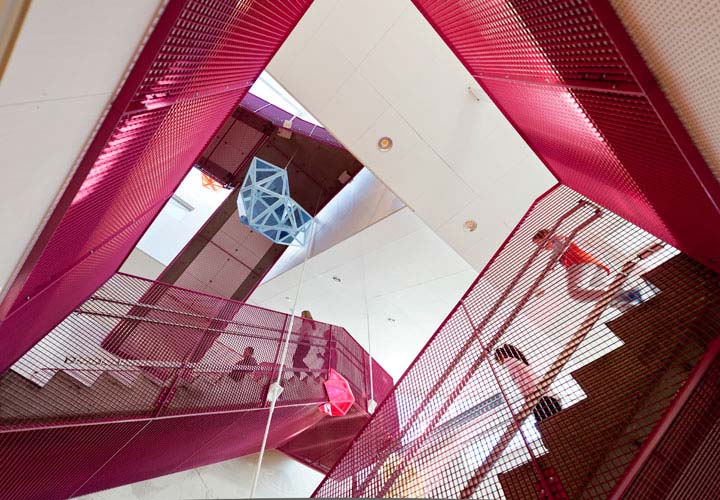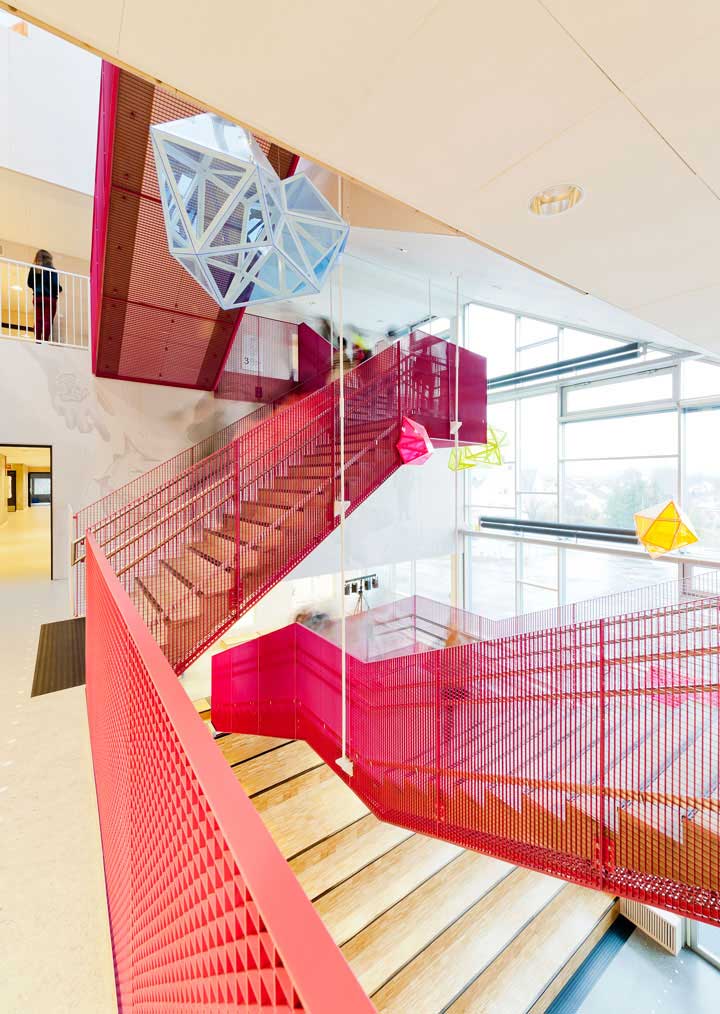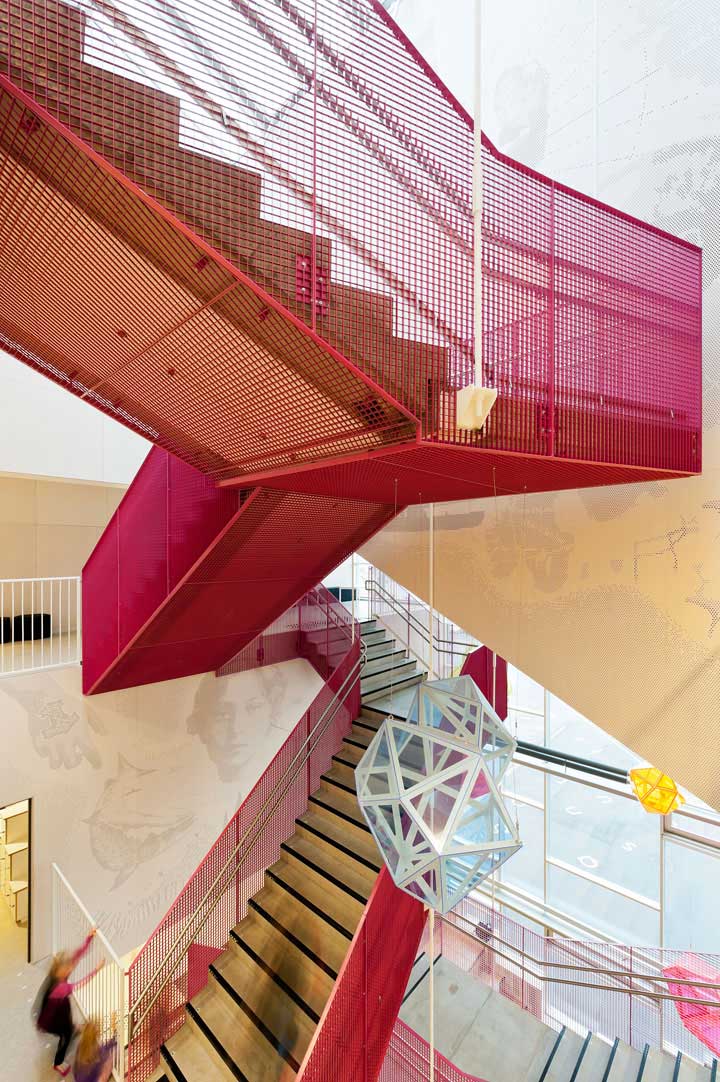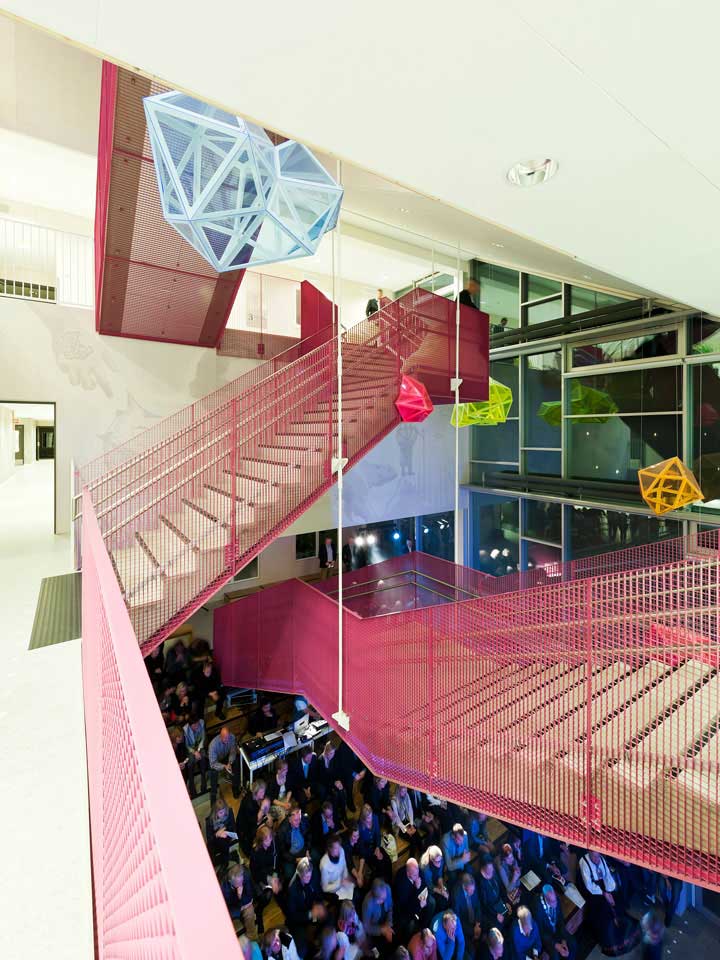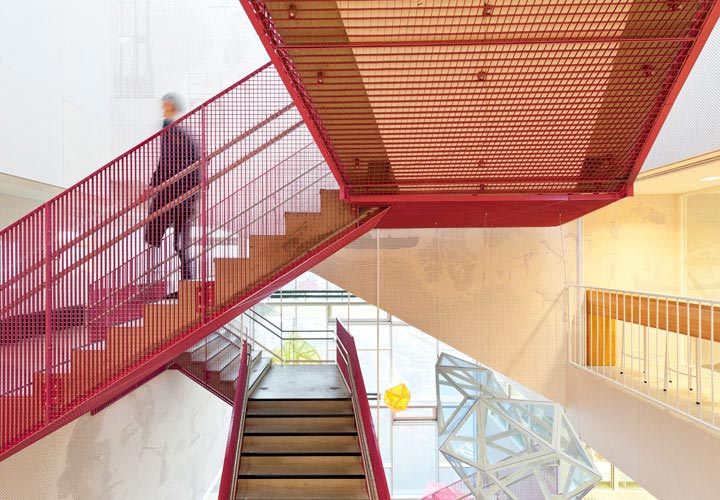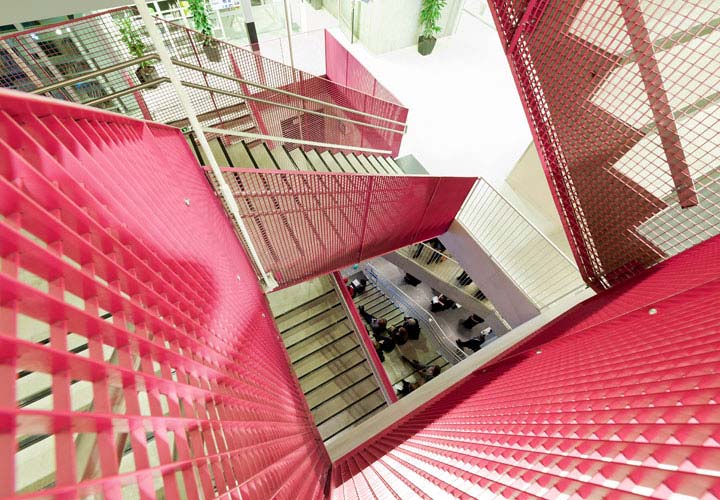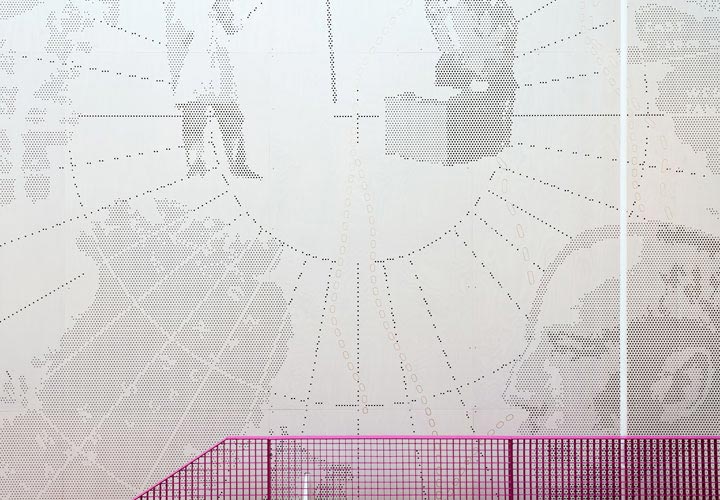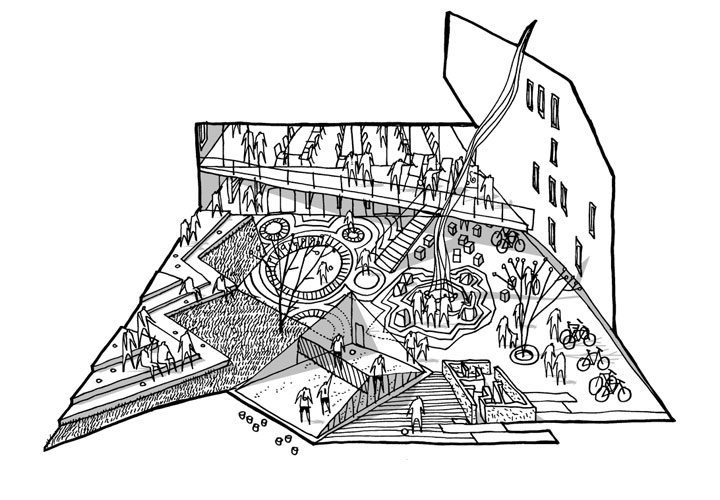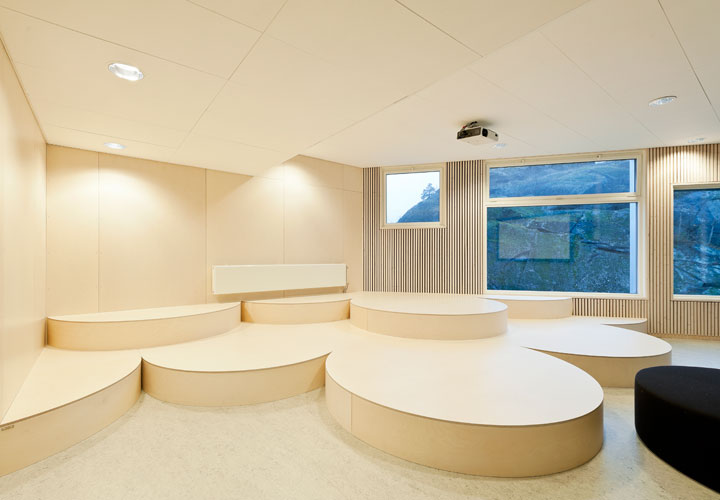MESTERFJELLET
- LOCATION: LARVIK, NO
- CLIENT: LARVIK MUNICIPALITY
- SIZE: 6.000 m² NEW BUILDING
- YEAR: 2011 – 2014
- STATUS: COMPLETED
- ARCHITECTS: CEBRA, VARIOUS ARCHITECTS, SPINN ARKITEKTER
- LANDSCAPE ARCHITECT: ØSTENGEN & BERGO
- INTERIOR ARCHITECT: BERG-LARSEN
- TURN-KEY CONTRACTOR: BUER
The Mesterfjellet School project combines a new 1st-10th grade school with 3 parallels and a public health centre in a new building that is linked to the existing sports facilities at Farrishallen. The project is based on the idea of a very compact building with a minimal footprint. First of all, this makes it possible to reuse the old foundations of a previous school building, which is important due to highly complicated geotechnical circumstances. Secondly, it leaves more outdoor park and playground area for the children and creates distance to neighbouring houses. This underlying idea resulted in a new building typology, which we call “the vertical campus”.
As opposed to a traditional atrium school with an introvert central space and skylights, the vertical campus contains a vertical multi-functional space that reaches all the way to the facades creating a connection between indoor and outdoor areas. The school’s common areas are grouped around this vertical space, which is similar to a traditional theater space with a tiny stage-like floor and a number of cantilevering balconies from which the children can overlook the heart of the school. Thus, the central area is humming with life and activities throughout the day while at the same time ensuring short internal distances and synergies between different functions.
In addition, the extrovert central space also acts as a linking element when the building is seen from the outside. The space and the adjacent library stand out from the school’s wood clad volume with their large transparent glass section, which creates visual connection between all building floors and the outdoor space. The glass section provides natural light and views and expresses the school’s openness and relationship with the local community.
The central space is clad with perforated wooden panels that are decorated with pedagogical and aesthetical elements made from holes of varying sizes. Three motives tell stories that are related to the special rooms behind them. The motive-walls weave images from scientific history, Nordic mythology and musical elements together into an open narrative that students can explore and discover over time. New details can be interpreted and understood differently as they develop throughout their tenure at the school.

